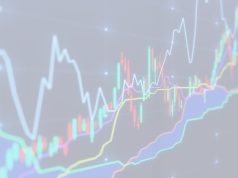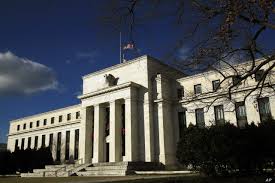Beyond Emotion: The Psychology of Investing
Plus 3 stocks to buy when you have time…
Dear Fellow Investor,
In the financial coliseum, where empirical analysis and raw emotion clash in real-time, understanding the psychological underpinnings of investing isn’t just wise; it’s essential. Why? Because history, adorned with data and case studies, shows us that the human mind can be both an asset and a liability in wealth creation.
1. The Statistical Symphony of the Markets
Let’s start with the numbers. A study from DALBAR, a financial research firm, revealed that from 1995 to 2015, the S&P 500 generated an average return of 9.85% annually. However, the average equity investor saw only a 5.19% return. Why this stark difference? The answer lies in psychological factors – impulsive decision-making, poor market timing, and herd mentality – that lead investors to buy high and sell low.
2. The Historical Echoes of Financial Follies
History is rife with tales of psychological triumphs and downfalls. Take the infamous Tulip Mania of the 1630s, where a single tulip bulb sold for more than ten times a skilled craftsman’s annual income. This wasn’t logic at work but extreme speculative investing driven by greed and social contagion.
Fast forward to the 2008 financial crisis: an atmosphere of fear caused a global stock market loss of $17 trillion. Investors who succumbed to panic sold their positions and crystallized their losses, while the S&P 500 recovered by more than 60% just a year later, highlighting the cost of emotional decision-making.
3. Behavioral Finance: Understanding the ‘Why’ Behind the ‘Buy’
Behavioral finance studies confirm the power of psychological influences. The disposition effect, a tendency to sell assets that have increased in value and hold onto those that decrease, often leads to lower returns. A 2018 research paper in the Review of Financial Studies found that this behavior could reduce investment returns by an average of 1.56% annually.
4. Practical Wisdom: Leveraging Psychology for Investment Success
How do we navigate these psychological minefields? By learning from the past and using tools and rules designed to mitigate emotional biases. Here are three stocks that not only have strong fundamentals but also serve as studies in psychological resilience:
- The Walt Disney Company (DIS): Despite experiencing a 42% drop in revenue in Q3 of 2020 due to the pandemic, Disney’s stock recovered to pre-pandemic levels by December 2020 and has continued to perform robustly, showcasing investor confidence and the rewards of patience and long-term thinking.
- Johnson & Johnson (JNJ): Historical performance during market downturns shows the psychological draw of stability. For instance, during the 2008 crisis, JNJ’s maximum drawdown (peak-to-trough decline) was just 31%, compared to the S&P’s 57%, illustrating the defensive nature of healthcare stocks.
- Tesla, Inc. (TSLA): Tesla’s meteoric rise of over 740% in 2020, despite minimal profits, underscores the psychological impact of future expectations on stock prices. It serves as a reminder of the potential rewards and risks of growth investing, necessitating a balanced psychological approach.
Conclusion: Mastering the Mind for Financial Mastery
Investing is not a robotic endeavor. It’s a human one, where understanding the psychology of ourselves and the market crowd can mean the difference between success and failure. As we stand on the shoulders of historical data and psychological insights, we realize that the key to unlocking the treasure chest of financial success is not just what we know, but how we think.
Discipline, dear investors, is your North Star.
Until next time, may your mind be your greatest asset.
Tom Anderson
Where to invest $500 Right Now?
Before you consider buying any of the stocks in our reports, you’ll want to see this.
Investing legend, Marc Chaikin just revealed his #1 stock for 2024…
And it’s not in any of our reports.
During his career of nearly 50 years, Marc Chaikin was one of the quantitative minds behind some of the most famous investors in history: Paul Tudor Jones, George Soros, Steve Cohen, and Michael Steinhardt.
Even the Nasdaq hired him to create three new indices.
And now he’s going live with his #1 pick for 2024.
You can learn all about it on Mr. Chaikin’s Website, here.
Wondering what stock he’s investing in?
Click here to watch his presentation, and learn for yourself…
But you have to act now, because a catalyst coming in a few weeks is set to take this company mainstream… And by then, it could be too late.
Click here to reveal the name and ticker of Marc Chaikin’s no. 1 pick for 2024…

















